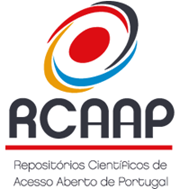INTERVENÇÃO SOCIOEDUCATIVA NUMA RESIDÊNCIA ESTUDANTIL: ANÁLISE DA PRÁTICA LÚDICA E RECREATIVA DE JUMP NUM CAMPUS DO INSTITUTO FEDERAL DE BRASÍLIA
DOI:
https://doi.org/10.25746/ruiips.v5.i3.14527Keywords:
Adolescentes, Educação Não-Formal, Intervenção Socioeducativa, Jump, Residência Estudantil, Adolescents, No formal Education, Socioeducative Intervention, Student ResidenceAbstract
RESUMO
Este artigo apresenta os resultados de uma investigação sobre os contributos de atividades educativas não formais em espaço escolar, em específico, do uso de camas elásticas, popularmente denominadas “jump”, em atividades desportivas/artísticas por parte de estudantes de Ensino Médio (equivalente ao Ensino Secundário em Portugal) residentes na escola, enquadradas num projeto de intervenção socioeducativa promovido pela primeira autora chamado “Jump Interação”. O público a que se refere o estudo é o de jovens que se veem obrigados a residir na instituição de ensino, Campus Planaltina do Instituto Federal de Brasília (IFB), que oferece cursos que atribuem a certificação do Ensino Médio, em particular o curso técnico em agropecuária. Assim, pelo período mínimo de três anos a escola será seu quase exclusivo ambiente de socialização. O público atendido, em sua maioria, apresenta-se na adolescência, passando pelo desafio da transitoriedade identitária, ao mesmo tempo em que está distante dos seus familiares e quadros de referência afetiva. Acresce que muitos têm uma origem familiar desfavorecida, o que, somado aos restantes desafios, sugere ações interventivas específicas. Metodologicamente, utilizou-se uma abordagem qualitativa, com o recurso à entrevista semiestruturada aplicada a participantes do projeto Jump Interação. A análise permitiu perceber os desafios enfrentados pelos jovens residentes e a forma como a atividade proposta, mediada por um interventor social, trouxe contribuições para o bem estar individual e social. Notam-se ganhos no aprender a lidar com novas experimentações; maior motivação para a educação formal, decorrente do sentimento de pertença alcançado; desenvolvimento do processo criativo e consequente de valorização pessoal; além dos benefícios da saúde, autoestima, relaxamento e de atendimento de uma demanda almejada pelos próprios estudantes: atividades desportivas e de lazer que façam da estadia na escola uma experiência mais significativa e prazerosa.
ABSTRACT
This article presents the results of an investigation on non-formal education activities in school spaces, in particular, through the use of trampolines, popularly called << jump >> , in sports / artistic activities with high school pupils living at school, framed by a project called "Jump Interaction", promoted by the first author.
The object of the study are young people who are forced to reside in the educational institution, a rural campus of the Federal Institute of Brasilia (IFB), which offers courses that award secondary education certification, namely in the area of agriculture. Thus, for a minimum period of three years, school is their almost exclusive socialization environment. The public are mainly adolescent, experiencing the challenge of identity construction while being away from their families and affective frameworks. In addition, many have a disadvantaged family background, which, added to the remaining challenges, suggests specific intervention actions.
Methodologically, a qualitative approach was used, using semi-structured interviews with the participants of Jump Interaction project. The analysis allowed us to understand the challenges faced by young people living in school and how the proposed activity, mediated by a social intervention professional, brought contributions to young people individual and social well being. there were gains in learning to deal with new challenges; greater motivation in formal education due to the acquired feeling of belonging; development of the creative process and consequent personal recovery; and the benefits to health, self-esteem, relaxation and meeting a demand desired by the students: sports and leisure activities to do in school, making it a more meaningful and enjoyable experience.
Downloads
Published
How to Cite
Issue
Section
License
Authors publishing in this journal agree to the following terms:
Authors retain copyright and grant the journal the right of first publication, with the article simultaneously licensed under the Creative Commons Attribution License that allows sharing of the work with acknowledgement of authorship and initial publication in this journal.
Authors are permitted to enter into additional contracts separately for non-exclusive distribution of the version of the article published in this journal (e.g., publish in an institutional repository or as a book chapter), with acknowledgment of authorship and initial publication in this journal.
Authors have permission and are encouraged to publish and distribute their work online (e.g., in institutional repositories or on their personal webpage) at any point before or during the editorial process, as this may generate productive changes, as well as increase the impact and citation of the published work.




